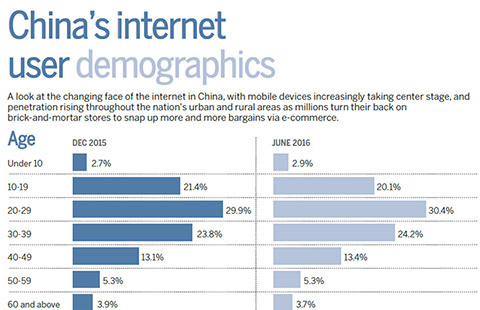Sports demand climbing higher
 |
|
A woman tries climbing at a sports equipment exhibition in Beijing. ZOU HONG/CHINA DAILY |
New five year plan for industry expected to provide extensive stimulus to expansion
China's sports market is projected to increase by leaps and bounds in the long term, as the country ramps up its resources to facilitate the development of physical activities, sports sector insiders believe.
Li Xudong, managing director of the investment banking department at Beijing-based China Securities, said at a recent seminar that the prospects for China's sports market were bright, although there was still a long way to go.
"Sports activities among ordinary people, compared with sports professionals, are seen creating huge demand," said Li Ning, chairman of the Beijing-based sportswear maker Li Ning Co Ltd. Li made a name for himself in sports, by winning three Olympic gymnastics gold medals.
Li Ning said the affluence stemming from increasing urbanization of China's population, and increases in family income would spur the sector.
According to independent research conducted by 36kr, a Chinese media site specializing in reporting technology-related news stories, the sports market is set to increase 25 percent in the next ten years,
Analysts say companies and investors have been seeking business opportunities in the industry in the past three years.
For example, Wanda Group bought Switzerland-based world top sports marketing company Infront Sports & Media at $1.2 billion, just three weeks after its purchase of a stake in Spanish La Liga champions Atletico Madrid. It also bought Florida-based World Triathlon Corporation-the world's biggest operator of Ironman events, accounting for 91 percent of the global market share of long-distance triathlon events-for $650 million.
China's e-commerce giant Alibaba Group Holding Ltd established Ali Sports Group, while Tencent, the top internet service portal, bought online broadcasting rights for a large number of sports events.
Fueling the trend is the government's initiatives to accelerate the development of the local sports industry and promote sport consumption among Chinese people.
China's General Administration of Sport mapped out the 13th Five-Year Plan for the industry in July 2016, aiming to spend the next five years in boosting it so that it would be worth 3 trillion yuan ($460 billion) by the end of 2020 and would account for 1 percent of domestic GDP.
Prior to the latest plan, the State Council released a guideline for the sports industry in 2014, which suggests that the total value of China's sports industry should exceed 5 trillion yuan by 2025.
In 2014, the value of the sector was 1.36 trillion yuan.
Under the latest sports plan, the total soccer pitches in the country will expand to over 70,000, averaging at least half a pitch for each 10,000 people and by 2020 China will have 20,000 soccer academies.
The plan also issued a blueprint for nationwide fitness programs, setting goals of building 500 public fitness centers in counties and 15,000 fitness facilities in villages and towns, with 10,000 more multifunctional playing grounds to be constructed in cities.
Analysts say the industry is flourishing with opportunities in many areas including sports media, sports facilities, merchandising, sports marketing and sponsorship.
However, although there is a huge potential market for sports, they say its difficult to turn that potential into profits because of a lack of a proven business model.
"There's a lot of money available to finance the industry, but we need time to figure out how to ... make profit," said Li Xudong at China Securities.
Li added that none of the Chinese sports companies were listed on the stock market's main board. As for the New Third Board-popular among micro, small and medium-sized firms-41 companies are currently listed in the sports or sports-related category. According to industry data, the 41 companies recorded an average annual loss of 11 million yuan.
Xinhua contributed to this story.






















